This article was co-authored by Heather Richmond, MD. Dr. Heather Richmond, MD is a board certified Dermatologist at Dermatology and Laser Surgery Center in Houston, Texas. With over nine years of experience, Dr. Richmond specializes in comprehensive dermatology including medical, surgical, and cosmetic procedures. She graduated cum laude from Yale University with a BA in Molecular, Cellular, and Developmental Biology. She earned her MD from the University of California, Irvine School of Medicine, where she was inducted into the Alpha Omega Alpha Honor Medical Society. She completed her Internal Medicine internship at Cedars-Sinai Medical Center and her Dermatology residency at The University of Texas MD Anderson Cancer Center in Houston. Dr. Richmond is a fellow of the American Academy of Dermatology and is a member of the American Society for Dermatologic Surgery, American Society for Laser Medicine and Surgery, and the Texas and Houston Dermatological Societies.
There are 22 references cited in this article, which can be found at the bottom of the page.
wikiHow marks an article as reader-approved once it receives enough positive feedback. In this case, 96% of readers who voted found the article helpful, earning it our reader-approved status.
This article has been viewed 785,411 times.
Although most warts will go away on their own, if you have a wart on your face, you may want to speed up the process. Luckily, there are several remedies you can try to remove warts from your face!
Steps
Removing Facial Warts with Home Remedies
-
1Try apple cider vinegar. Apple cider vinegar is a common home remedy for all types of warts. The acid in the vinegar is thought to attacks the wart area, causing it to peel away from the healthy surrounding skin, taking the virus with it. Exercise caution when using apple cider vinegar, which has been known to cause chemical burns on the face.[1] Dilute it up to 50% with water to minimize burns.[2]
- Bragg apple cider vinegar is a commonly trusted brand you can find on Amazon here.
- In fact, the malic and lactic acids found in the vinegar can help to soften and exfoliate the skin.
- These ingredients are commonly used to treat acne on the face.
- To apply apple cider vinegar, soak a cotton ball in vinegar (about half-soaked) and place it on the facial wart. Then, cover the area with an adhesive bandage for 24 hours.
-
2Crush garlic and use it as a mask. Garlic’s caustic effect will cause the facial wart to blister and fall off in about one week. The substance allicin in garlic has an antiviral effect that kills a broad spectrum of viruses, including human papilloma virus.[3]
- Crush the garlic and apply it to the facial warts.
- Hold it in place with tape for 24 hours.
- Change the garlic and tape daily.
Advertisement -
3Try using lemon juice. Lemons are an everyday item with a variety of cleansing properties. The citric acid in lemons contains vitamin C, thought to kill the virus that causes warts. This may also help to soften the wart, making it easier to remove.[4]
- Apply to the facial warts at least three times per day.
-
4Attach duct tape to the wart. Although this remedy is not medically verified, some people claim that it works fast. Duct tape supposedly works because of how the body reacts to substances that are contained in it. The use of the duct tape will irritate your skin, which can cause the formation of antibodies that will help get rid of the virus causing your facial warts. This must be done for periods of six days, up to a maximum of two months.[5]
- You can find duct tape on Amazon here.
- Cover your facial warts with duct tape when you sleep, and then remove it right away when you wake up in the morning.
- Repeat this procedure as necessary until the wart is removed.
-
5Apply a banana peel. Banana mash contains a proteolytic enzyme (an enzyme that breaks down protein) that digests and dissolves the facial wart. This can be an easy and soothing way to remove facial warts. Use surgical tape to adhere the inner part of a banana peel to the wart overnight.[6]
- The suggested treatment is one to two weeks.
- Other foods, such as pineapple, papaya and sauerkraut also contain this enzyme.
-
6Look into using betadine. Betadine is an antiseptic that helps fight the virus causing the facial warts. Betadine surgical scrub like this can be gently rubbed on the infected area for five minutes daily until the lesions resolve. Similar products exist in stores, for example: Bactrine or Bazuka. You can apply it twice daily.
- This treatment is not recommended for those allergic to iodine or betadine.
- Consult a doctor if your skin becomes irritated.
-
7Apply milkweed cream. Milkweed cream can be found at your local health care store, apothecary, or online here. An enzyme found in the milkweed plant digests and dissolves the wart. These products are made from the sticky sap of the milkweed plant. These plants have also been shown to be a possible anti-acne treatment.
- Apply to the facial warts at least four times per day.
- The secretion made by the plant when broken can also be applied directly to the wart.
Removing Facial Warts With Verified Medical Treatment
-
1Get topical medications prescribed. There are some medicines used to lessen the symptoms of infection and remove facial warts. These treatments usually require several months for the infection to clear, and are often associated with intense inflammation and discomfort. These medications are:
- Retinoid (Tretinoin) Cream. Daily topical application of this cream may trigger resolution.[7]
Retinoid cream disrupts the wart's skin cell growth. When applying Tretinoin cream to the facial warts, the following guidelines must be followed:
- Apply once a day at bedtime.
- First, wash the wart with soap and water and wait at least 15 to minutes for it to dry. Then apply a pearl-sized portion to the facial wart. If applied on moist skin, it can cause peeling and irritation.
- Tretinoin cream can cause sensitivity to sunlight because it makes the skin soft and thin. Remember to wear sunscreen when going outside.
- Cantharidin or other topical agents containing trichloroacetic acid. Cantharidin contains an extract from a blister beetle. When it is applied to the skin, a blister will form around the wart. The blister will then lift the wart off your skin and the dermatologist can remove the dead portion of the wart.[8]
- Cover the affected area with a clean bandage afterwards.
- Follow all instructions given by your doctor when using this.
- 5-Fluorouracil. This cream will stop the replication of DNA and RNA, which should stop wart growth.[9]
- Retinoid (Tretinoin) Cream. Daily topical application of this cream may trigger resolution.[7]
Retinoid cream disrupts the wart's skin cell growth. When applying Tretinoin cream to the facial warts, the following guidelines must be followed:
-
2Investigate keratolysis. Keratolysis involves the abrasive removal of dead skin from the surface of the skin. This works through a combination of chemical treatment (usually, the use of salicylic acid), which softens and kills the cells of the virus, and manual exfoliation. When the wart becomes soft from the chemical treatment, and then a pumice stone or an emery board is used to remove it.[12]
-
3Request cryosurgery. Liquid nitrogen is used to freeze and destroy warts,[13] which are then scraped off with a curette. Cryosurgery is a good way to treat stubborn warts that have resisted all noninvasive treatments. Talk to your doctor if you wish to seek this treatment.
- There are also over-the-counter versions of this treatment.[14]
- With liquid nitrogen, a blister may form at the treatment site, but it will slough off in two to four weeks.
- It should be noted that cryosurgery and curette scraping are not painless procedures and the application of liquid nitrogen may cause burning or stinging at the treated site that may persist for a few minutes after the treatment.
- Scarring or loss of color can complicate this treatment.
-
4Try pulsed dye laser therapy. Laser therapy uses heat energy to destroy the wart and the red blood cells that feed it. The therapy is usually well tolerated, and does not leave scars or pigment anomalies. The pulsed dye laser is fast and efficient, but its cost makes it less accessible than other options. This treatment has an 80% or greater efficacy when used on warts.[15]
- The lesions usually resolve without scarring at about two weeks.
- This treatment is used for a variety of skin problems.
-
5Talk to your doctor about intralesional bleomycin sulfate therapy. If you have severe facial warts, you may wish to try this highly effective procedure.[16] [17] The doctor will inject your wart(s) with intralesional bleomycin, which is a drug usually used to treat cancer. A single injection may be enough to remove the wart, or you may need to follow up for more injections every three to four weeks.[18] This therapy causes little or no scarring and may cause slight pigmentation that usually fades within a year of treatment.[19]
-
6Consider immunotherapy. For warts that have not responded to other treatments, immunotherapy is another option.[22] [23] Your doctor will try to rally your immune system to attack the wart, either by applying a chemical (such as diphencyprone) to the wart or injecting it with a molecule (usually Candida antigen). The hope is that these will cause a reaction from your immune system, which will attack both the injected substance and the wart, eliminating it naturally.[24] It may also help decrease the reoccurrence of warts, since your body will learn to defend against HPV virus.[25]
Preventing Facial Warts From Worsening
-
1Ignore the warts and let them heal themselves. If you can, just ignore the warts because they can sometimes go away on their own. You can cover the warts with bandages or even be stylish by using a scarf or a bandanna to cover facial warts. Study shows that most warts will resolve themselves after two years.[26]
- However, if the warts really bother you, by all means try the treatment options discussed above.
- If the warts persist for years, or if you find they begin to spread, seek medical attention.
-
2Do not pick your warts and maintain proper hand hygiene. Stop touching the warts and leave them alone. Practice the universal precaution of good hand hygiene so that you don’t transmit the warts to others. Picking warts can worsen your problem.
- Keep your hands dry and clean because warts thrive on moist areas.
- Make it a habit to wash your hands before and after applying topical solutions on your warts.
- Isolate your clothes and towels. Make sure that others don't use these items of yours to prevent the transmission of warts. If possible, label them so that others will know that these are your items and will think twice about using them.
-
3Never brush, comb or even shave areas where there are warts. This can easily spread the virus to other areas. Remember, warts are highly contagious. Even a slight brush of the affected part can infect you or others. This can also harbor warts and spread them to other people. You may want to let your facial hair grow if you can, to avoid shaving the area. Facial scrubs and abrasives may contribute to this as well.
Expert Q&A
-
QuestionWhat is the best facial wart remover?
 Heather Richmond, MDDr. Heather Richmond, MD is a board certified Dermatologist at Dermatology and Laser Surgery Center in Houston, Texas. With over nine years of experience, Dr. Richmond specializes in comprehensive dermatology including medical, surgical, and cosmetic procedures. She graduated cum laude from Yale University with a BA in Molecular, Cellular, and Developmental Biology. She earned her MD from the University of California, Irvine School of Medicine, where she was inducted into the Alpha Omega Alpha Honor Medical Society. She completed her Internal Medicine internship at Cedars-Sinai Medical Center and her Dermatology residency at The University of Texas MD Anderson Cancer Center in Houston. Dr. Richmond is a fellow of the American Academy of Dermatology and is a member of the American Society for Dermatologic Surgery, American Society for Laser Medicine and Surgery, and the Texas and Houston Dermatological Societies.
Heather Richmond, MDDr. Heather Richmond, MD is a board certified Dermatologist at Dermatology and Laser Surgery Center in Houston, Texas. With over nine years of experience, Dr. Richmond specializes in comprehensive dermatology including medical, surgical, and cosmetic procedures. She graduated cum laude from Yale University with a BA in Molecular, Cellular, and Developmental Biology. She earned her MD from the University of California, Irvine School of Medicine, where she was inducted into the Alpha Omega Alpha Honor Medical Society. She completed her Internal Medicine internship at Cedars-Sinai Medical Center and her Dermatology residency at The University of Texas MD Anderson Cancer Center in Houston. Dr. Richmond is a fellow of the American Academy of Dermatology and is a member of the American Society for Dermatologic Surgery, American Society for Laser Medicine and Surgery, and the Texas and Houston Dermatological Societies.
Board Certified Dermatologist Salicyclic acid is one of the most effective at-home treatments you can try on your warts.
Salicyclic acid is one of the most effective at-home treatments you can try on your warts. -
QuestionWhat do warts look like?
 Heather Richmond, MDDr. Heather Richmond, MD is a board certified Dermatologist at Dermatology and Laser Surgery Center in Houston, Texas. With over nine years of experience, Dr. Richmond specializes in comprehensive dermatology including medical, surgical, and cosmetic procedures. She graduated cum laude from Yale University with a BA in Molecular, Cellular, and Developmental Biology. She earned her MD from the University of California, Irvine School of Medicine, where she was inducted into the Alpha Omega Alpha Honor Medical Society. She completed her Internal Medicine internship at Cedars-Sinai Medical Center and her Dermatology residency at The University of Texas MD Anderson Cancer Center in Houston. Dr. Richmond is a fellow of the American Academy of Dermatology and is a member of the American Society for Dermatologic Surgery, American Society for Laser Medicine and Surgery, and the Texas and Houston Dermatological Societies.
Heather Richmond, MDDr. Heather Richmond, MD is a board certified Dermatologist at Dermatology and Laser Surgery Center in Houston, Texas. With over nine years of experience, Dr. Richmond specializes in comprehensive dermatology including medical, surgical, and cosmetic procedures. She graduated cum laude from Yale University with a BA in Molecular, Cellular, and Developmental Biology. She earned her MD from the University of California, Irvine School of Medicine, where she was inducted into the Alpha Omega Alpha Honor Medical Society. She completed her Internal Medicine internship at Cedars-Sinai Medical Center and her Dermatology residency at The University of Texas MD Anderson Cancer Center in Houston. Dr. Richmond is a fellow of the American Academy of Dermatology and is a member of the American Society for Dermatologic Surgery, American Society for Laser Medicine and Surgery, and the Texas and Houston Dermatological Societies.
Board Certified Dermatologist Warts tend to have some characteristic physical features. Most often, they're rough or scaly on the surface. They can have a pebbly appearance. You might see little red dots on a wart, although those aren't always present. Warts tend to be either flat topped or dome-shaped. They tend to be circular, although when they get larger, they can be irregularly shaped. Sometimes they're clustered, and they are most often skin-colored and slightly lighter than the surrounding skin.
Warts tend to have some characteristic physical features. Most often, they're rough or scaly on the surface. They can have a pebbly appearance. You might see little red dots on a wart, although those aren't always present. Warts tend to be either flat topped or dome-shaped. They tend to be circular, although when they get larger, they can be irregularly shaped. Sometimes they're clustered, and they are most often skin-colored and slightly lighter than the surrounding skin. -
QuestionIs there a face wash that helps to get rid of warts?
 Chris M. Matsko, MDDr. Chris M. Matsko is a retired physician based in Pittsburgh, Pennsylvania. With over 25 years of medical research experience, Dr. Matsko was awarded the Pittsburgh Cornell University Leadership Award for Excellence. He holds a BS in Nutritional Science from Cornell University and an MD from the Temple University School of Medicine in 2007. Dr. Matsko earned a Research Writing Certification from the American Medical Writers Association (AMWA) in 2016 and a Medical Writing & Editing Certification from the University of Chicago in 2017.
Chris M. Matsko, MDDr. Chris M. Matsko is a retired physician based in Pittsburgh, Pennsylvania. With over 25 years of medical research experience, Dr. Matsko was awarded the Pittsburgh Cornell University Leadership Award for Excellence. He holds a BS in Nutritional Science from Cornell University and an MD from the Temple University School of Medicine in 2007. Dr. Matsko earned a Research Writing Certification from the American Medical Writers Association (AMWA) in 2016 and a Medical Writing & Editing Certification from the University of Chicago in 2017.
Family Medicine Physician There are no facial washes that help with getting rid of facial warts, but there are many home remedies listed in this article that may help, like a garlic mask.
There are no facial washes that help with getting rid of facial warts, but there are many home remedies listed in this article that may help, like a garlic mask.
References
- ↑ https://www.ncbi.nlm.nih.gov/pmc/articles/PMC4479370/
- ↑ http://nc.as.ua.edu/blog/apple-cider-vinegar-cures-warts-indigestion-and-tremors/
- ↑ https://onlinelibrary.wiley.com/doi/abs/10.1111/j.1365-4632.2004.02348.x
- ↑ http://www.e-ijd.org/article.asp?issn=0019-5154;year=2007;volume=52;issue=2;spage=96;epage=98;aulast=Vali
- ↑ https://www.aad.org/public/diseases/a-z/warts-self-care
- ↑ http://students.umw.edu/healthcenter/files/2011/08/Warts.pdf
- ↑ http://www.ncbi.nlm.nih.gov/pmc/articles/PMC3274422/
- ↑ http://www.ncbi.nlm.nih.gov/pmc/articles/PMC1578244/
- ↑ http://www.ncbi.nlm.nih.gov/pubmed/16703777
- ↑ http://www.uptodate.com/contents/skin-warts-beyond-the-basics
- ↑ http://www.uptodate.com/contents/skin-warts-beyond-the-basics
- ↑ http://www.healthcentre.org.uk/cosmetic-treatments/wart-keratolysis-for-warts.html
- ↑ http://www.nhs.uk/Conditions/Warts/Pages/Treatment.aspx
- ↑ Heather Richmond, MD. Board Certified Dermatologist. Expert Interview. 15 September 2020.
- ↑ http://www.ncbi.nlm.nih.gov/pubmed/7496552
- ↑ http://www.ncbi.nlm.nih.gov/pmc/articles/PMC3263129/
- ↑ http://archderm.jamanetwork.com/article.aspx?articleid=552706
- ↑ http://www.warts.org/bleomycin-treatment.html
- ↑ http://www.ncbi.nlm.nih.gov/pmc/articles/PMC3263129/
- ↑ http://archderm.jamanetwork.com/article.aspx?articleid=552706
- ↑ http://www.warts.org/bleomycin-treatment.html
- ↑ https://www.aad.org/public/diseases/contagious-skin-diseases/warts
- ↑ http://www.warts.org/warts-immunotherapy.html
- ↑ http://www.healthcentre.org.uk/cosmetic-treatments/wart-immunotherapy-for-wart-removal.html#further info
- ↑ http://www.healthcentre.org.uk/cosmetic-treatments/wart-immunotherapy-for-wart-removal.html#further info
- ↑ http://archderm.jamanetwork.com/article.aspx?articleid=527886
- ↑ Heather Richmond, MD. Board Certified Dermatologist. Expert Interview. 15 September 2020.
About This Article
To remove a wart on your face, soak a cotton ball in an mixture of water and apple cider vinegar. Place the cotton ball on the wart and cover it with a bandage, then leave it in place for 24 hours. You can also try this same method with other common foods like crushed garlic, lemon juice, and banana peel. For stubborn warts, ask your doctor about freezing the warts off of your face or getting a topical cream prescription. Read on for tips on how to prevent facial warts from getting worse.
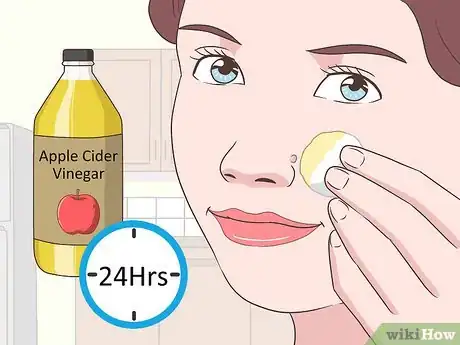
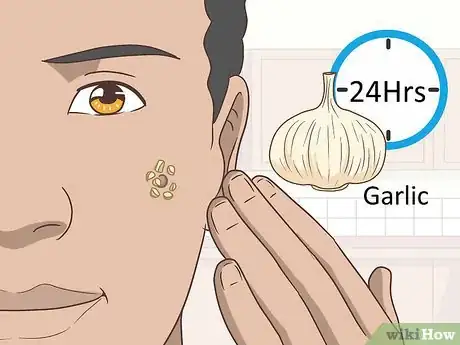
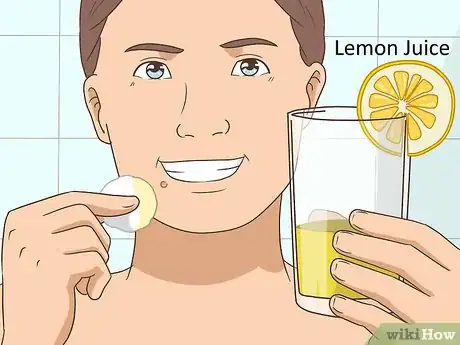
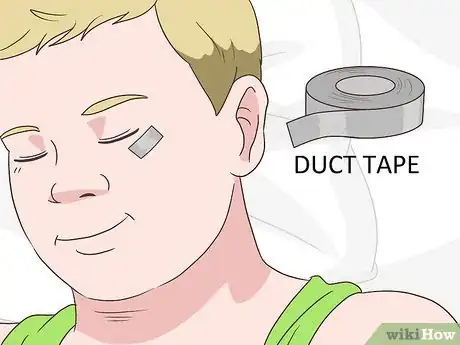
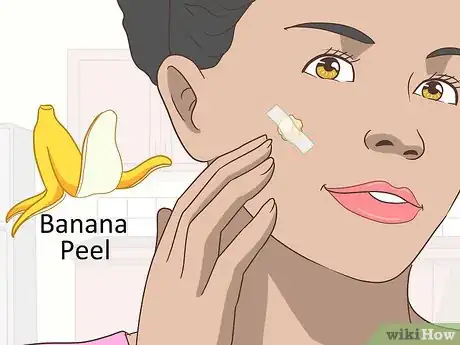
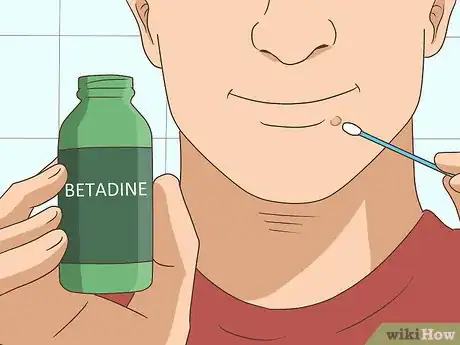
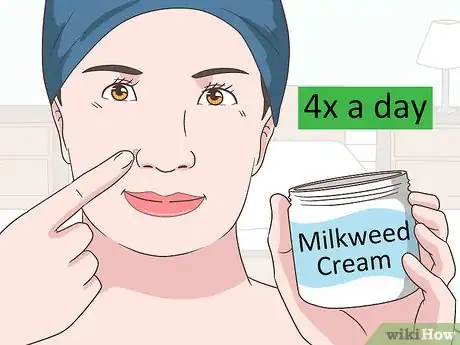
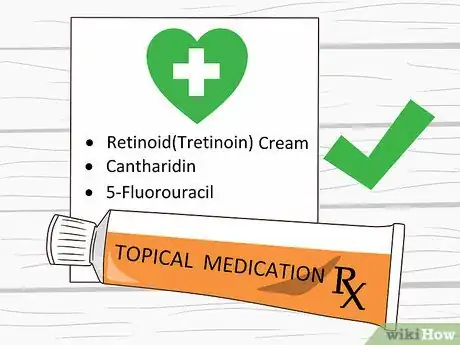
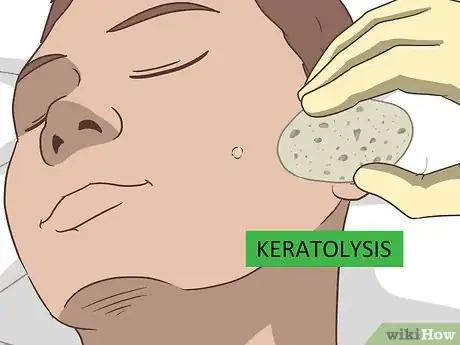
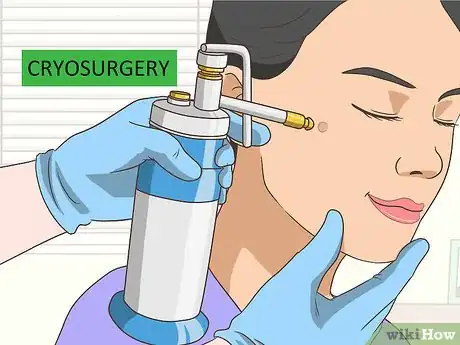

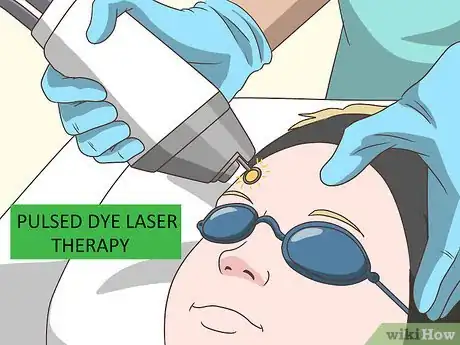
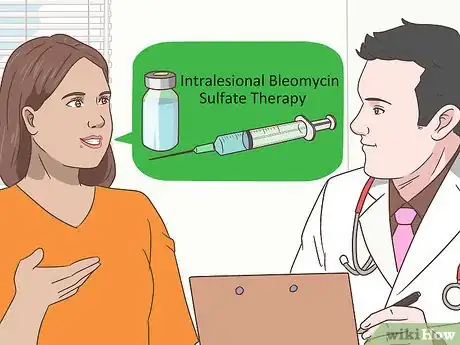
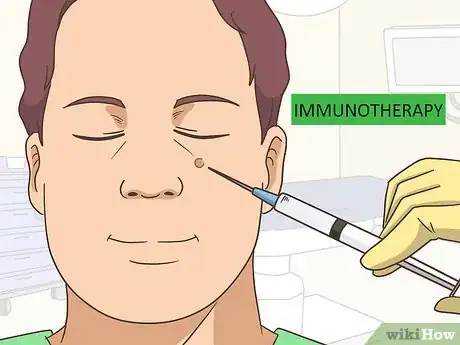
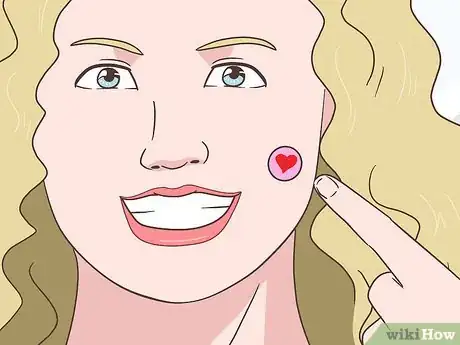
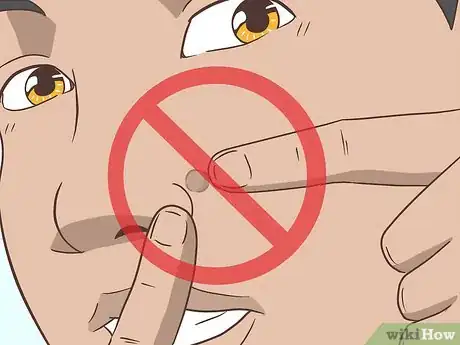
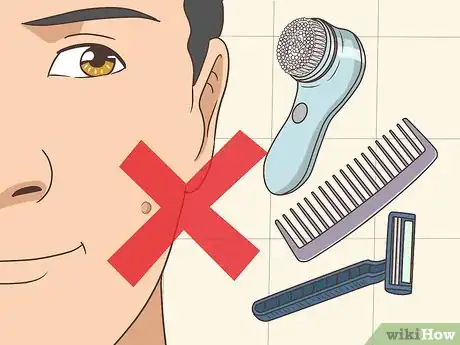
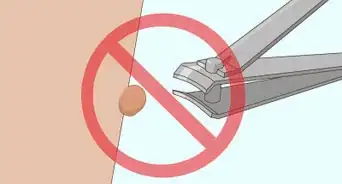

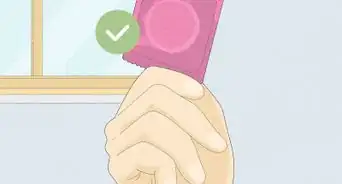
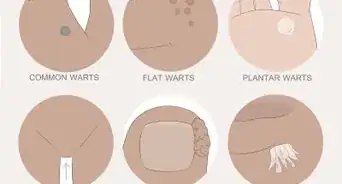

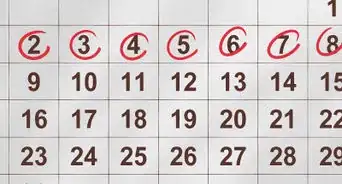

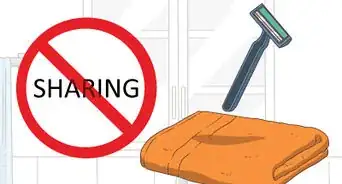
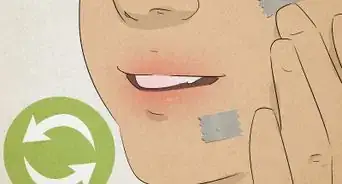
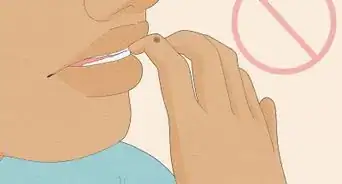

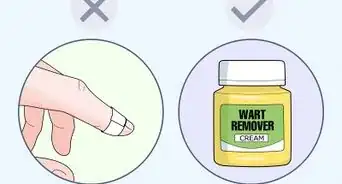
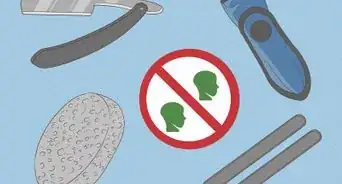
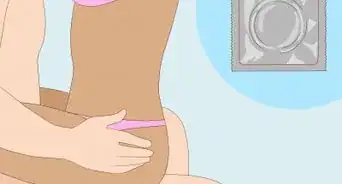










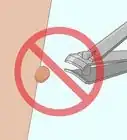

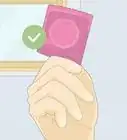




































Medical Disclaimer
The content of this article is not intended to be a substitute for professional medical advice, examination, diagnosis, or treatment. You should always contact your doctor or other qualified healthcare professional before starting, changing, or stopping any kind of health treatment.
Read More...